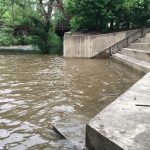New Jersey Future Blog
Open Space Action Needed
September 23rd, 2003 by Tim Evans
- New Jersey will fall short of its voter-approved “million acres” open space goal by at least 350,000 acres, largely because of the rising costs of land.
- Every year, the state converts another 18,000 acres or 28 square miles to development, an area roughly two times the size of Jersey City. Population growth alone is not to blame; we are consuming land at roughly three times the rate of population growth.
- Development or “land use change” has been ranked as the number one threat to New Jersey’s environment and its residents by the New Jersey Comparative Risk Project, an independent panel of experts commissioned by the state.
(Sources: New Jersey Future’s report, “Smart Conservation: The “Green” Side of Smart Growth,’ and The Final Report of the New Jersey Comparative Risk Project)
VOTERS CAN BOOST PRESERVATION; STATE CAN DO MORE, TOO
On Nov. 4, New Jersey voters will have an opportunity to increase the amount the state can spend on preservation and community park development, without additional taxes or state appropriations.
The additional $150 million in open space spending would be supported by state bonds. No additional taxes or appropriations are required to issue the bonds, because of today’s low bond interest rates.
Governor James E. McGreevey has pledged $50 million of the additional funding toward open space and farmland preservation in the Highlands, a critical environmental region in northern New Jersey and the source of drinking water for more than half of New Jersey’s residents.
Another $50 million has been earmarked for the development of community parks statewide, as park of the Governor’s “Parks for the People” initiative. The remaining $50 million in preservation funding has not yet been allocated.
If approved by voters, the additional money would prove essential in protecting New Jersey’s drinking water and open lands, both urban and rural. But land acquisition by itself is not sufficient. New Jersey’s state and local leaders must also ensure that land purchases are coordinated with planning and regulations, to better protect important open lands and to ensure conservation purchases are cost-efficient and effective.
Preservation spending, coupled with better land-use planning and “smart conservation” practices, can diminish the threat of sprawling development. Voters can help November 4 by voting to approve additional funding for open space. Leaders can help by backing voter support with better planning and stronger open space regulations.
















